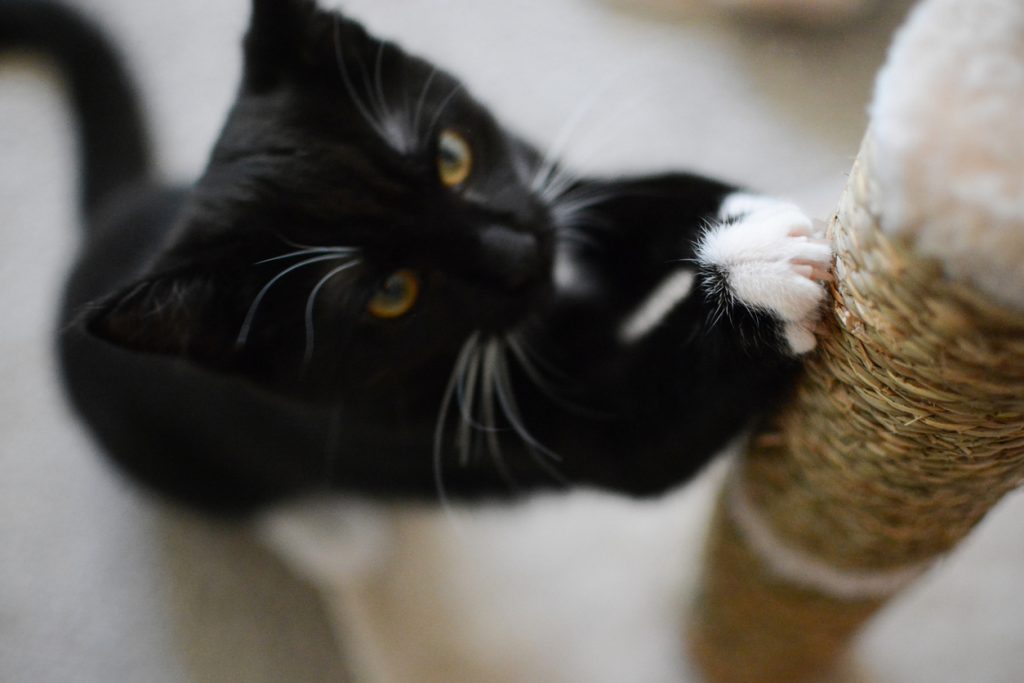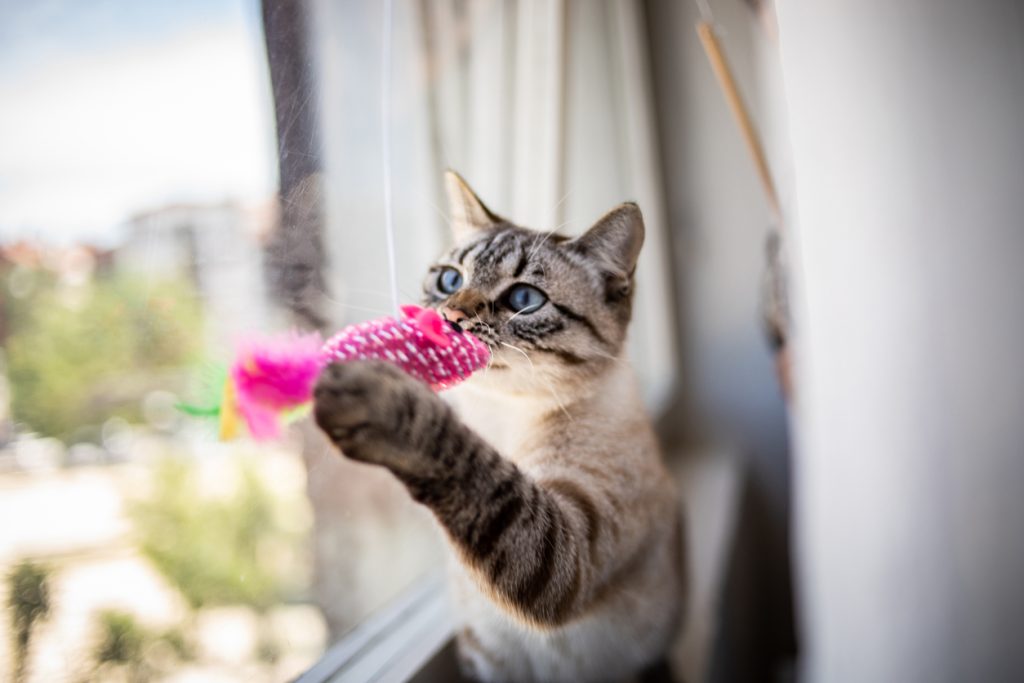Is declawing cats illegal in the UK?
Declawing your cat is illegal in the UK and many other countries because this surgical procedure is the equivalent of cutting a human finger off to the first knuckle. To someone who may not have owned a pet before, this term might be confused with trimming nails or general cat grooming – it is important, however, that it is not confused. It is harmful to cats and can make them aggressive.
They will likely experience prolonged, unnecessary pain, and the procedure will force them to learn how to walk again. Declawing is not the answer to stop your cat from scratching or kneading – this is normal behaviour which helps cats to stretch, exercise, groom, climb, run, relieve stress and communicate.
As you can see, their claws are very important to their everyday activities. However, there are alternatives to prevent your cats from shredding your furniture – simply read on.
Alternatives to declawing cats

- Purchase a scratching post
Offering a tall, sturdy place for your cat to shred and scratch will deter them away from your sofa or dressing table. Finding the perfect scratching post for your cat is likely to involve multiple levels and dangly elements, which will entice them. To attract them further you can spray catnip onto their scratching post. Not all cats are affected by catnip, but it’s certainly worth a try; it’s safe for cats and can help you to introduce them to their new toy.
- Vinyl nail caps
If your cat won’t stop attacking your furniture, try using some soft nail caps. They are safe to use and most cats don’t mind them once they are on, but they can be difficult to clip on – particularly if your cat doesn’t like having their paws played with.
Something to bear in mind: your cat’s claws shed regularly, and so they will need to be reapplied and checked weekly. Cats can still extend and retract their nails whilst these are on, meaning they can still climb, use the litter box, and scratch and there will be no damage.
- Frequent nail trimming
Having the patience and the right nail trimmers for your cat will ensure a swift trimming process, once you both get used to it. Give your cat’s paws a dab with a damp towel and check between their pads. See to it that their feet are free from dirt and debris to keep them pain-free and calm. Trim any long bits of hair sticking out of their paws (particularly for long-haired cats) to prevent irritation.When you’ve built up the courage to trim your cat’s nails, go to a quiet room where they will feel relaxed and have them sit on your lap, take a paw into your hand and press it gently to expose the nail. Present your pet with a treat after this and repeat with another paw. Now try again, but this time, clip off a small piece of the white part of each nail. If you find this impossible, your vet can do this for you.
- Calming diffusers
Try dotting some calming plug-in diffusers around your home. You can purchase some containing pheromones, which are clinically proven to reduce badly behaved cats. These pheromones replicate ones that cats leave behind to remind them that a place is safe and secure. When cats rub themselves against items or even ourselves, that’s their way of showing they are comfortable and settled.
- Enriched environments
Cats love to be active, and if they are under stimulated it’s likely boredom will take over – hence frequent scratching. Provide your furry pal with different heights and levels for them to climb and enjoy and lots of toys that they can play with on their own when you’re not there. Mixing up their environment will make for one very happy companion.

For exceptional care choose Green Lane Farm to be your pet’s home away from home. We have been looking after animals for over 50 years and together our dedicated team have built a flawless reputation. We’re a family-run business with a passion for animals, which is why we always have returning customers who know that their pets will be safe and secure during their stay with us. For more information about our services, please call today, we’re more than happy to help.




